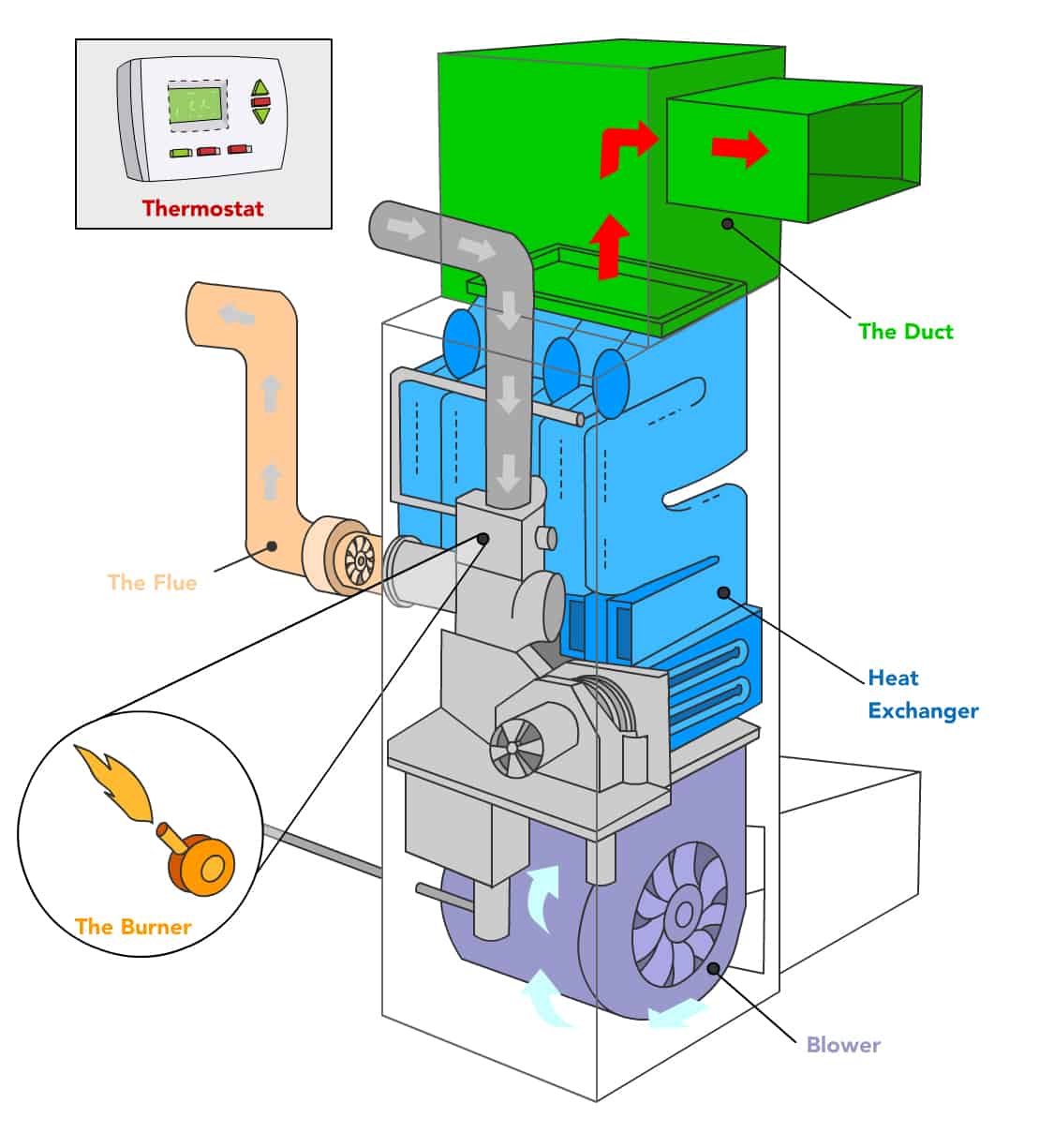![]() If you’ve ever peeked into your furnace, you probably saw a confusing maze of wires, metal plates, tubes, and other intimidating technology. I’ve been working with HVAC technology most of my adult life, so I often forget how confusing these insides can be to my customers.
If you’ve ever peeked into your furnace, you probably saw a confusing maze of wires, metal plates, tubes, and other intimidating technology. I’ve been working with HVAC technology most of my adult life, so I often forget how confusing these insides can be to my customers.
But last week I was at a buddy’s house, watching football, and he started telling me he was thinking about trying to fix a heating problem himself. He just didn’t know where to start, because it was all so confusing. I told him that if you spend your life working with furnaces, it’s actually pretty easy to understand—kind of like the football game we happened to be watching.
The Inner Workings of Your Furnace
A standard furnace is going to have six basic parts. Now, to be clear, you don’t want to just reach into one and start pulling these things out—any serious tinkering will more than likely require the expertise of a licensed HVAC professional. But it can be helpful for homeowners to know a bit about its inner workings. Let me try and explain the same way I taught my buddy: by using football, America’s favorite Sunday sport.
Let’s start by looking at the six heavy lifters in the average furnace:
- The burner: When the burner’s lit, it looks like a glowing blue tube, kind of like a welding torch. This is where the pilot light is located. It’s also the part of your furnace where the fuel is turned into heat energy before being sent into the heat exchanger.
- The heat exchanger: This looks like a snake of tubes running up and down, kind of like a bicycle rack outside of a building. These tubs are heated when the burner uses fuel to create a combustion reaction that generates warm air. That warmed air is then blown out by the furnace fan into your home. If you think of your furnace as a football team, the heat exchanger distributes the air throughout your home like a quarterback does the ball, sending it down the field. Now, some high-efficiency furnaces may have a second heat exchanger that captures the heat from the combustion process as well to improve unit efficiency, like a backup quarterback on the sidelines holding the clipboard and giving the starter advice about plays.
- The blower: This is the fan, often the biggest use of energy in a unit. Fans are either draw-through, pulling hot air out and distributing it, or blow-through, forcing air over the heating element and out through the duct. Think of the blower as the quarterback’s throwing arm, it’s a smaller yet vital component that the heat exchanger needs to do its job.
- Ductwork: You probably already know what ductwork looks like, because there’s always someone crawling through them in action movies, but it’s important to know it’s the delivery system for the heated air to the rooms of your home. It usually consists of either rectangular or circular metal chambers of various sizes that snake above your ceiling and through the walls to all the rooms of the house. In football terms, ductwork is the passing route tree that determines where the quarterback will throw the ball on any given play. It also has vent-like devices called dampers that allow you to control the amount of air delivered to each space and to balance out the pressure of the air so that rooms furthest away from your furnace receive enough heat.
- The flue: Also called a vent pipe, this is a small, rounded duct that curves up from your furnace, either to your roof or an exterior wall of your home. This is the exhaust vent for all those byproducts leftover from the combustion process in the heat exchanger. Before you get worried about pollution, though, it should be noted that these byproducts usually only consist of water vapor and carbon dioxide.
- The thermostat: Not technically a component in your furnace, it could still be considered part of it since it’s the device you use to interface or “talk” with it. Think of the thermostat as the offensive coordinator, who communicates with the quarterback through a headset and tells him how to best throw the ball and run the offense. The thermostat calls the shots, the blower, heat exchanger, and ductwork execute them.
There really are a lot of similarities between heating equipment and football: they both have specialized pieces, they’re both complicated, and they’re both an important part of most people’s lives every winter. Your furnace is a complex system with several parts working together for the good of the heating team. If functioning correctly, it will get warm air into the end zone, er, I mean, into the cold rooms of your house.
If you suspect your furnace isn’t functioning properly, it’s best to call a trained HVAC professional. I know when I’m watching a football game, I shout at the TV and tell my buddies I could move the ball better. But the reality is that the minute I stepped onto the field I’d be pulverized. Tinkering with your furnace can be much the same way. It’s good to know the basics, but leave the work that counts to the professionals.
Has your furnace been stalling when it comes to moving warm air into your home? Call the HVAC professionals at Bell Brothers today to get the heat flowing freely again.

